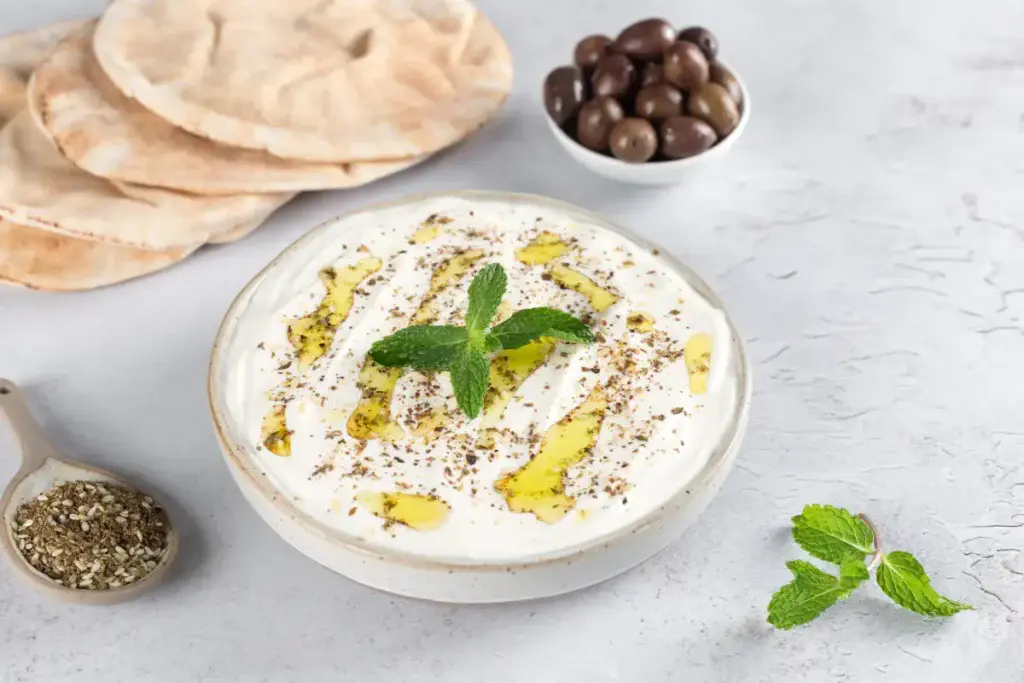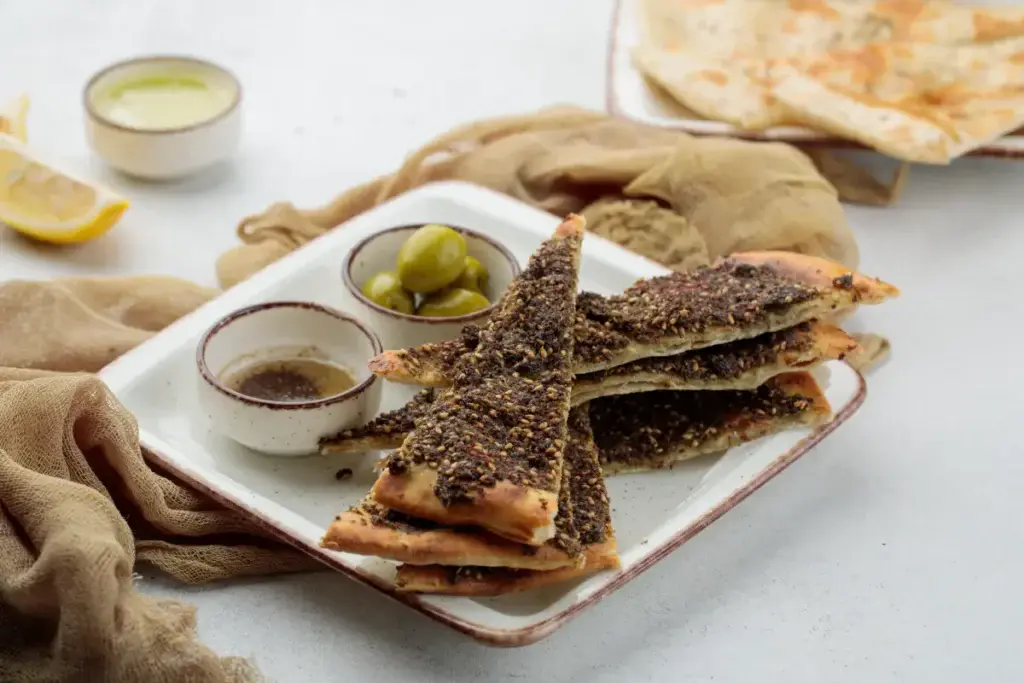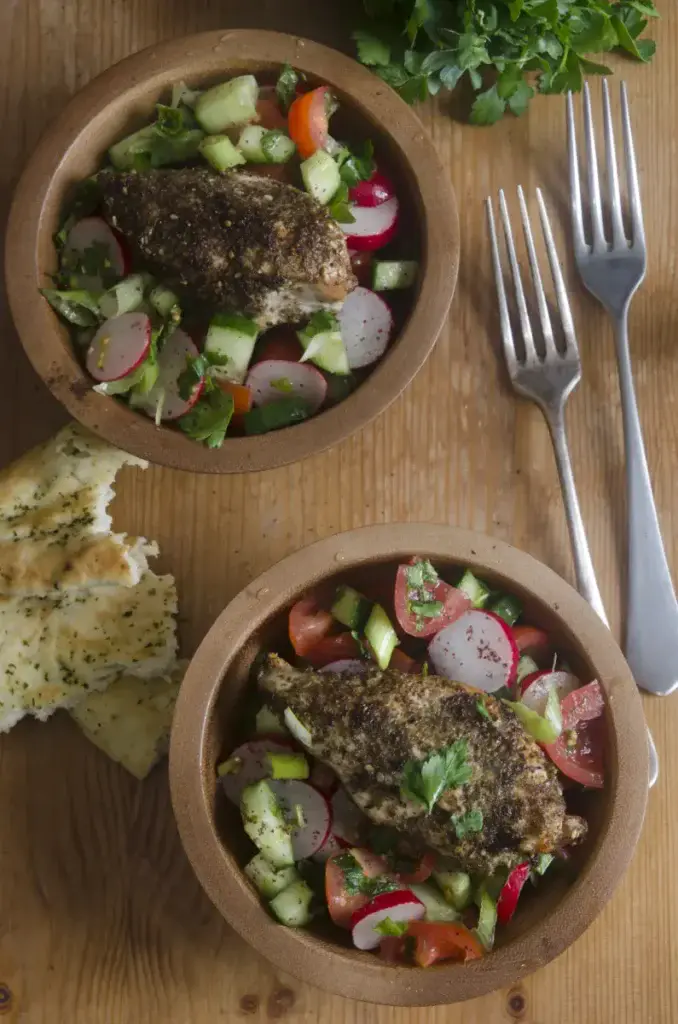
Walk into any modern test kitchen, pop-up restaurant, or snack R&D lab and one herbaceous blend that seems to be everywhere is za’atar. This spice mix is a bright, savory, citrusy tangle of flavors, and it’s not showing up just in traditional Middle Eastern cuisine anymore. It’s crossing borders and boundaries, taking up space on snack foods, in dips, on roasted veggies, and even in cocktails.
Global cuisine lovers are waking up to the deep flavor and flexible applications of za’atar. But what exactly makes this seasoning so craveable? How did it rise from a regional condiment to a global menu must-have? And what can food brands do with it next? We’ve got all the tasty details, and then some.
What Makes Za’atar So Irresistibly Tangy and Earthy
At its core, za’atar seasoning is more than the sum of its ingredients. It’s an aromatic mix of herbs, citrusy sumac, nutty sesame seeds, and a hit of salt that transforms nearly any dish into something layered and addictive. The base herb is typically origanum syriacum, also known as Syrian oregano, which brings a wild, slightly floral flavor. Depending on the blend, you might also find thyme, marjoram, or oregano, each adding a nuanced edge.
Then comes the magic of sumac, a tangy, crimson-hued berry that delivers a lemony brightness without the moisture. Toss in toasted sesame seeds, flaky sea salt, and occasionally a whisper of cumin, satureja, or hyssop, and you’ve got yourself a spice rub with serious personality.
It’s sharp. It’s warm. It’s vegetal. It’s nutty. It’s a dance of brightness and depth in one well-balanced bowl.
Za’atar’s Origins and Traditional Uses

This spice has ancient roots — so ancient, in fact, that it’s mentioned in the Bible. Popular across Arab cuisine, the Levant regions, and parts of North Africa, za’atar has long been part of daily life.
Traditionally, it’s eaten for breakfast, mixed with olive oil and smeared on flatbread (called manakish) or scooped with warm pita. In some households, it’s also stirred into strained yogurt or sprinkled on cucumber slices with a splash of lemon for a quick snack.
Across generations, family recipes featuring za’atar have been passed down for everything from roast chicken to cheese-stuffed pastries, making it a unifier across borders and tables. In many cultures, za’atar is considered a source of comfort, identity, and even medicine.
Why Za’atar Is Stealing the Spotlight in Global Cuisine
Today’s food scene thrives on flavors that are both authentic and adventurous, and za’atar checks all the boxes. It’s bold, yet balanced. Ancient, yet endlessly adaptable. And with consumer palates leaning hard into global inspiration — especially Middle Eastern cuisine, Mediterranean cuisine, and Turkish cuisine — za’atar is having a serious moment.
It’s showing up in fusion sauces, in better-for-you snacks, on trendy avocado toast, and in gourmet vinaigrettes. It crosses over into vegan and flexitarian menus with ease, pairing beautifully with plant-based options like tofu, chickpea, eggplant, and lentil. For brands looking to stand out on the shelf or chefs aiming to add a flavor pop with depth, za’atar delivers flavor, story, and that critical craveability factor in one spice mix.
A Flavor That Plays Well in Snacks, Spreads, and Sauces
Za’atar’s popularity is showing up on actual shelves and menus in more diverse applications than ever before. The spice’s ability to coat, bind, blend, and shine makes it a chameleon across product categories:
Snacks
Think roasted chickpeas, pita chips, popcorn, and even seed crackers coated with za’atar. The blend adds both flavor and texture, especially when paired with olive oil or sesame oil for added grip. It’s got the punch of salt, the intrigue of herbs, and the brightness of sumac. It’s basically the trifecta of great snackability.
Spreads and Dips
Mix za’atar into hummus, swirl it into strained yogurt, or blend it with tahini for a bold new sauce. We’re even seeing it mixed with avocado and a dash of citrus to create za’atar-spiked guacamole, perfect for modern mezze platters or fast-casual dipping sides.
Sauces and Dressings
From creamy coleslaw dressings to zesty salsa, za’atar plays well with both fat and acid. Mix it with vinegar, lemon juice, and olive oil for a game-changing salad vinaigrette, or incorporate it into creamy yogurt-based tzatziki with minced garlic, diced cucumber, and chopped parsley.
Chefs and Food Developers Are Finding Endless Uses for Za’atar
So, where exactly is za’atar showing up on menus and product lines? Let’s break it down:

- Grilled Vegetables: Toss zucchini, eggplant, or tomato with olive oil and za’atar, then char on a sheet pan or grill. The blend balances caramelization with herby brightness.
- Roasted Meats: Rub it onto beef, lamb, or chicken before roasting, or use it in a marination mix with lemon, garlic, and olive oil. Za’atar makes a killer shawarma spice rub, too.
- Savory Baked Goods: Swirl into sourdough, fold into pastry fillings, or sprinkle over naan brushed with butter or oil. It plays beautifully with flour, yeast, and heat.
- Breakfast Bowls: Top a bowl of warm grains or a toasted flatbread with a fried egg, a spoonful of baba ghanoush, some za’atar, and a drizzle of olive oil for a high-impact morning meal.
- Salads and Bowls: Use za’atar as a finishing seasoning for vegetable-forward grain bowls, warm lentil soup, or hearty chopped salads. A little shake goes a long way in brightening every bite.
- Cocktails and Mocktails: Yes, even drinks. Za’atar can rim a glass of citrus or tomato-based cocktails for a savory twist. Or infuse into simple syrup for an herbaceous pop in a lemony mocktail.
- Desserts? Maybe! While za’atar is traditionally savory, we’re starting to see it used in chocolate truffles, honey-thyme shortbread cookies, and even halva-inspired bites where sweet meets savory in a balanced way.
Za’atar Is Tapping into Health Trends and Global Cravings
As modern consumers grow more ingredient-conscious, they’re seeking out globally inspired flavors that also tick health and wellness boxes. Za’atar fits right in. It’s low in calories, naturally organic-friendly, and often kosher or plant-based depending on the blend. For brands targeting Whole30, paleo, vegan, or clean-label eaters, za’atar is a flavorful way to add complexity without synthetic flavors or preservatives.
Plus, it delivers functional food benefits! Sumac is high in antioxidants, thyme and oregano boast antimicrobial properties, and sesame seeds bring fiber, protein, and healthy fat. As interest in nutrition facts labels rises, za’atar stands strong with a short, recognizable ingredient list and naturally low sodium content when made fresh. In a foodscape dominated by better-for-you everything, it’s the spice that satisfies both curiosity and clean eating.
On the cultural side, consumers are craving authenticity and storytelling. Za’atar carries emotional and geographic richness. Food that tells a story, especially one with a connection to family, heritage, or healing, speaks louder than ever. For chefs and food developers, za’atar doesn’t just bring taste — it brings legacy.
Creative Pairings That Highlight Za’atar’s Depth and Brightness
Za’atar is a team player. It adds sparkle, umami, and a slight zest to other ingredients without overpowering them. Here’s where it shines in creative pairings that delight both home cooks and professional chefs alike:
- Za’atar + Feta + Watermelon: This summer-ready combo is a burst of sweet, salty, and herbal. The za’atar enhances the cheese’s tanginess while grounding the fruit’s brightness.
- Za’atar + Avocado + Lemon Pepper on Toast: Elevate basic avocado toast with a shake of za’atar and a crack of lemon pepper. The fat of the avocado carries the spice’s flavor, and the citrus layers keep it refreshing.
- Za’atar + Roasted Carrots + Honey: Roasting brings out the natural sugars in vegetables, while za’atar adds an herby counterpoint. A touch of honey seals the deal with a sweet-savory blend.
- Za’atar + Tahini + Garlic: Whether in a dip or a sauce, this trio is a kitchen essential. Za’atar keeps the richness of tahini from becoming overwhelming, and garlic adds bite.
- Za’atar + Lamb Kofta + Tzatziki: A match made in heaven. The spice adds depth to grilled meat, and the cooling yogurt dressing highlights every layer of flavor.
- Za’atar + Tomato Soup + Flatbread: Swirl za’atar into soup or brush it onto dough before baking for a layered experience that’s comfort-forward and globally inspired.
- Za’atar + Pasta Salad + Cucumber + Olive Oil: Mix it into a cold pasta or grain salad with diced cucumber, olive, and cherry tomato. Bonus: it works as a vinaigrette seasoning too.
- Za’atar + Chickpea + Peanut + Curry Notes: Add it to a curry bowl or spiced chickpea stew with peanut accents. It adds complexity without competing.
What’s Next for Za’atar in Foodservice and CPG Innovation

As far as trend potential goes, za’atar is nowhere near done. It’s moving past seasoning packets and pantry jars into bold new formats: think za’atar-infused cheese snacks, pita crisps with a sesame-crusted edge, and frozen grain bowls that layer za’atar with roasted root vegetables and creamy tahini drizzle. It’s already appearing in seasoning blends like duqqa and ras el hanout, but the standalone flavor still holds enormous appeal.
Foodservice is also riding the za’atar wave hard. Chefs are adding it to pastry crusts, using it in plant-based kebab marinades, pairing it with charred kale and roasted beets, and even featuring it in weekend brunch dishes like poached eggs over za’atar-dusted toast. Meanwhile, CPG brands are turning to za’atar to diversify their spice lineups, adding global character to everyday categories like dips, spreads, snacks, and seasoning blends for roasting or baking.
Given its relatively short domestic shelf presence and growing consumer curiosity about Middle Eastern cuisine, za’atar is poised to become a staple flavor of the next five years. It has just the right balance of exotic appeal, culinary versatility, and comfort factor to transcend trend status and land firmly in the “essential pantry” category.
Let’s Build Something Bold Together — Za’atar Is Just the Start
If za’atar isn’t on your radar yet, it should be. And if it’s already in your arsenal, it’s time to double down. Whether you’re crafting a new snack line, designing your next sauce, or ideating on globally inspired meal kits, za’atar brings a familiar-but-fresh twist that plays beautifully across formats.
At NuSpice, we specialize in helping food innovators bring bold ideas to life. Our seasoned specialists can create a custom za’atar seasoning tailored to your processing specs, ingredient constraints, and flavor targets. We’ll work with you to explore pairing options, adjust salt levels, and layer complementary ingredients like hyssop, sumac, or garlic for a signature spice mix that elevates your entire line.
Ready to create a za’atar custom seasoning blend that sings? Schedule a consultation with a NuSpice expert today, and let’s turn your next innovation into something unforgettable.